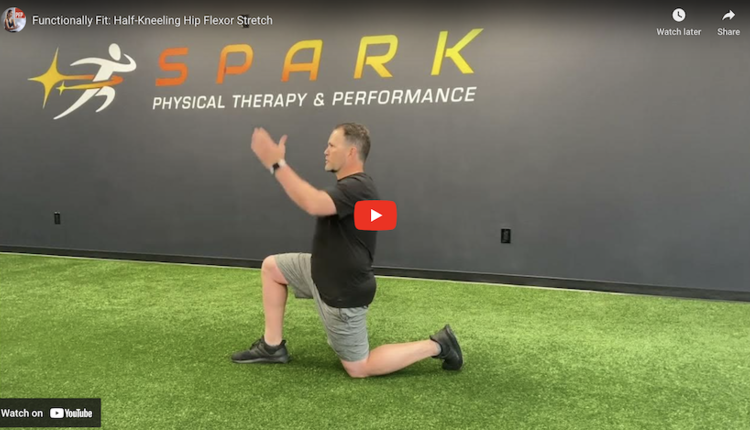The house the carpenter builds is only as good as the tools andthe materials with which he has to work. It is vitally importantthat we bring along the right tools in order to be the best trainerand best instructor we can be. Just like the carpenter has specific toolsfor specific jobs, so too does a trainer. Not having the right tools won't getthe job done, or in our case, will not get results for our clients, or it willleave them bored or cost us a lot of money.
I started Fit Fun Boot Camps a little over two years ago, and nowwith 11 locations, 14 different boot camp times and close to 300 bootcampers, making sure I have the right equipment is vitally important.Whether you are doing in-home training, boot camps, semi-privatetraining, corporate boot camps or a variety of other types of training,there are some factors you must take into consideration when purchasingequipment.
Clientele: Who are these workouts for? What is their fitness level andexperience? There is some equipment that might not be necessary for ababy boomer population but essential to an elite athlete.
Space: Most of the time, you will have to transport the equipment to andfrom locations using a car or truck. Selecting equipment that is lightweightand portable and doesn't take up much space is vitally important. I learnedthis lesson the hard way last year, when I was carrying about 300 poundsworth of dumbbells and kettlebells in the trunk of my Ford Taurus. Shewasn't too happy about this and decided to break a rear shock coil. I now requireall of my boot campers to bring their own set of dumbbells that weighbetween 10 and 25 pounds, as well as their own mat.
Equipment that I love to have in my car because it is lightweight and compact:TRXs, bands, cones, rings, ladders, jump ropes, hurdles and medicineballs. Medicine balls are ok but do weigh a lot if you have more than 10 inthe trunk, and they also take up a good amount of space, but I find havingthem really gives variety that my clients love.
Cost: When looking for equipment, I want to find things that don't costa lot but will last a long time. I have learned the hard way that the cheapestisn't always the best, but spending more for the best can also be impractical.I love the TRX, but some could argue that it costs a lot of money. If I were toget them for all my boot camps and have one out of every two boot campershave one, it would cost me over $20,000, so I have only a handful of TRXsthat I use for a couple of boot camps, as well as in-home training.
Also, when looking at cost, you need to find out the average life expectancy ofany piece of equipment and try to purchase things that will last as long as possible.
Inventory: Knowing your business and the number of individual piecesthat you will need is important. If I wanted to use TRXs for all of my bootcamps, it would cost me a lot and probably wouldn't be the smartest investment.If you are doing small groups or one-on-one training, however, a coupleof TRXs would hardly cost anything, comparatively, and would be well used.
Versatility: One thing that any piece of equipment needs to be is versatile.If the "toy" you want to use does only one thing, don't get it. But if it cando many different things and allows the body to be worked from differentpositions, it becomes much more appealing. That is why I personally buymedicine balls, TRXs, ladders, resistance bands, cones, a couple of hurdlesand yoga mats -- because they have so many uses and applications.
I was recently hired by a company to review a new piece of equipmentthat assisted people in doing pull-ups. I really liked the concept and application,and it would be great for small group training or at a gym, but I don'tdo pull-ups that often in boot camp, and when I do, I can have them donegatives, have a trainer or partner hold their feet, or use a bar low enoughso they could use their legs to help lift them up. So, even though the assistedpull-up bands are nice, they don't serve a large enough purpose necessary tomake the financial and space commitment.
I would love to use more kettlebells in my workouts, but without a place to store equipment, it just isn't practical to be hauling hundreds ofpounds of kettlebells around everywhere, but for small group and in-hometraining, bringing a couple of kettlebells would be no problem.
Another piece of equipment that I can't go without is my video camera. Ipost videos of my workouts, the food I eat and testimonials on my blog. Everyoneis probably familiar with the Flip Camera, which is what I have. I havethe HD version, but my only issue is that the file sizes are so large that it is veryslow to edit or upload to youtube. Another popular one out on the marketright now is the Kodak Zi8. I have heard great things about this camera anda couple of features that I really like are that it lets you choose the quality youwant to film, you can take pictures, and you can have a cordless mic if you areshooting from long distances. The benefits of any of these cameras are thatthey are dummy proof and very easy to edit and upload online.
As you can see, there is a lot that goes in to selecting the right equipment.Knowing what you need will drastically cut down on buying equipment thatyou don't use and the trouble of storing and transporting. You'll need to finda balance between providing enough variety to keep your clients engaged andhappy while being practical. Unfortunately, BOSU and Swiss balls just don't make the cut because they take up far too much space. Sandbags and tireswould also be nice, but unless you have a big truck to haul them, they are out.
So, before you spend thousands of dollars on the latest and greatest gadget,ask yourself if this will help your clients reach their goals in a way thatis different or better than what they are currently using. If the answer is yes,and it fits the above criteria of price, space, versatility and inventory, thengo ahead and invest in it.
Dustin Maher, America's Trainer to Moms, currentlytrains over 1800 clients through his Fit Fun Bootcamp,MamaTone, and Fit Moms For Life monthly DVD program.He helped create a coaching/mentorship programto help trainers utilize local media, including TV, radio,newspapers and magazine, set to release this August. Formore info visit www.FitnessMediaDominator.com.












